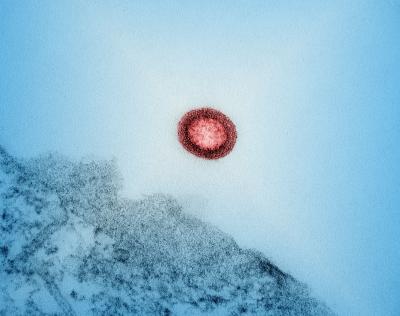NIAID will support large, electronically generated cohorts of HIV-negative men who have sex with men (MSM), transgender women (TGW), people who inject drugs (PWID) and other groups at increased risk of HIV acquisition in Latin America through the notice of funding opportunity (NOFO) Limited Interaction Targeted Epidemiology: Epidemiology of Transmission and Treatment of HIV Among People Who Are at Increased Risk for HIV Infection in Latin America (LITE-LA) (UG3/UH3, Clinical Trial Optional).
Interested researchers can apply for funding to study the epidemiology of viral HIV suppression and determine study approaches or evidence-based digital treatment interventions to reduce HIV transmission in Mexico and South and Central America.
Research Objective and Scope
The primary goal of this NOFO is to generate information to develop health interventions to reduce HIV transmission in Mexico and South and Central America. Continued follow-up of people living with HIV (PLWH) should be conducted to study the epidemiology of viral suppression.
This NOFO allows digital, clinical, non-investigational new drug application trials to determine optimal study approaches or pilot evidence-based digital HIV prevention and treatment interventions to reduce HIV transmission. There is increasing evidence that use of digital interventions, delivered online or through smartphones, can advance primary HIV prevention outcomes such as reduced sexual risk behavior, decreased sexually transmitted infections (STIs), and improved use of oral or long-acting pre-exposure prophylaxis (PrEP).
To inform the treatment of HIV in Latin American countries, include comparison of participants with HIV who become engaged in care and reach non-detectable HIV levels to those whose virus remains detectable.
Studies of interest include:
- Identification of micro-epidemics in high HIV transmission areas (hot spots) and of key sub-populations where HIV prevention and treatment efforts in Latin America are most needed.
- Characterization of subgroups of PWID, female sex workers, transgender persons, and MSM who could be prioritized for HIV prevention and improved treatment strategies.
- Description of risk behaviors and risk determinants in these key populations that can inform onward interventions to reduce HIV incidence.
- Studies using the assembled cohorts to investigate patterns of HIV testing and mechanisms to optimize testing frequency and rapid linkage to treatment.
- Monitoring HIV PrEP or undetectable equals untransmitable (U=U) awareness, uptake, and adherence and identifying associated determinants.
- Mental health as a determinant of HIV exposure risk and engagement in prevention and treatment of HIV.
- Multi-level analyses of individual and social-contextual determinants of HIV risk behavior, seroconversion, or reaching viral suppression of HIV.
- Development and testing of scalable, digitally delivered primary HIV prevention interventions that promote HIV risk reduction and may include support for PrEP use or viral suppression of HIV-positive sex partners among high-risk groups through digital clinical trials.
NIAID will consider applications including the following types of research to be nonresponsive and not review them:
- Studies limited to studying PLWH.
- Studies of subjects residing outside Mexico and South or Central America.
- Studies not including a co-investigator from each country in Latin America providing participants.
- Studies not proposing the use of technology-focused approaches to establish and follow cohorts of HIV-negatives for epidemiologic research.
- Studies not focused on at least one of the high-incidence groups prioritized by the NOFO: MSM, female sex workers, transgender persons, or PWID.
- Studies not including an analysis that demonstrates that the expected statistical power of their planned investigations will be adequate.
- Studies planning to enroll fewer than 5,000 individuals without HIV during the UG3 phase.
- Studies proposing a clinical trial that requires an investigational new drug application.
- Studies lacking clearly described timelines for the UG3 and UH3 phases and studies lacking clearly defined and quantifiable Go/No-Go transition milestones.
UG3/UH3 Phased Innovation Awards
Applications must be structured around two phases. The UG3 phase provides 2 years of support for enrollment of sufficient numbers of participants from high-incidence populations. The UH3 phase provides an additional 3 years of support to conduct research to advance our knowledge of when, where, why, and how HIV transmissions currently occur in Latin America.
At the end of the UG3 phase, NIH staff will assess Go/No-Go transition milestones accomplishment, preparedness of the cohort to implement the proposed epidemiology and the optional intervention studies, programmatic priorities, and available funds to determine a transition to the UH3 award. UG3 phase funding does not guarantee support of the UH3 phase award for research implementation.
Applicants proposing clinical trials must include the available information and describe the plan, including the timeline for developing final versions in time to implement the clinical trial within the first 12 months. For a list of the five required attachments, read Section IV. Application and Submission Information of the NOFO.
Budget Information
NIAID plans to fund one or two awards. Application budgets are not limited but need to reflect the actual needs of the proposed project. The project period may be up to 5 years; up to 2 years for the UG3 phase and up to 3 years for the UH3 phase.
Application Deadline
Applications are due on July 30, 2024, by 5 p.m. local time of the applicant organization.
Contact Information
Send inquiries to NIAID’s scientific/research contact, Dr. Gerald Sharp, at GSharp@niaid.nih.gov or 240-627-3217. Send any peer review related inquiries to NIAID’s peer review contact, Dr. Robert Unfer, at Robert.unfer@nih.gov or 301-641-1981.



